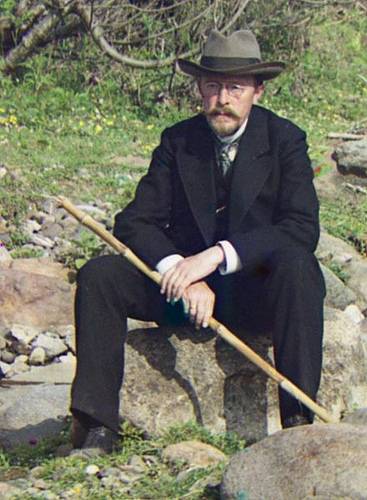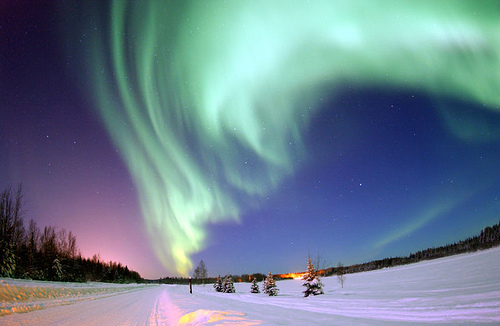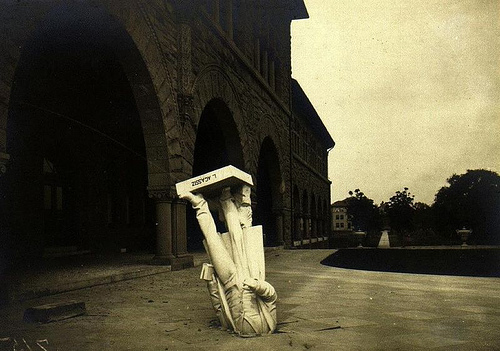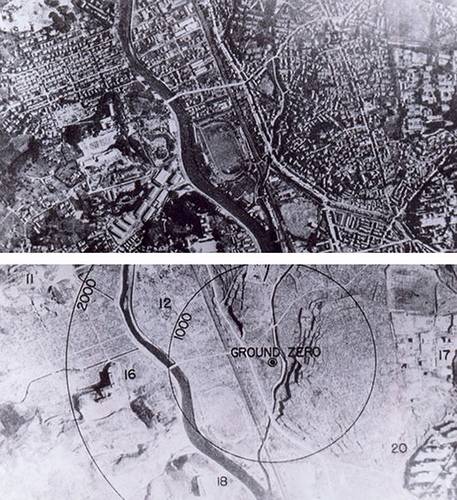Josiah Carberry
If there are fake students in the world, surely too there are fake professors.
Josiah Stinkney Carberry has been “teaching” at Brown since 1929, when faculty prankster John Spaeth posted a false notice for a Carberry lecture on “Archaic Greek Architectural Revetments in Connection with Ionian Philology.”
Carberry never showed up, of course, but Spaeth gamely offered details about the missing professor’s life and studies, and now Carberry has become a campus tradition. He’s scheduled to lecture every Friday the 13th and February 29th (somehow never turning up), and students try to publish references to him in otherwise serious journals. Brown’s student newspaper also publishes letters from Carberry on April Fool’s Day.
One clue for those who don’t get the joke: The professor is celebrated for his work in “psychoceramics” — “the study of cracked pots.”
Cheese!

Russian chemist Sergei Mikhailovich Prokudin-Gorskii was taking color photographs as early as 1909.
He took this self-portrait in 1915, managing to look old-timey even without sepia.
Unquote
“Aristotle maintained that women have fewer teeth than men; although he was twice married, it never occurred to him to verify this statement by examining his wives’ mouths.” — Bertrand Russell
Adam Rainer
Adam Rainer lived as both a dwarf and a giant. Born in 1899 in Austria, Rainer was 4 feet tall at age 18. Then, suddenly, he began to grow, stretching a full meter in the next 11 years to reach 7 feet 1.75 inches in 1931. The physical strain left him bedridden for life, but he kept growing. When he died in 1950 at age 51, Rainer had reached 7 feet 8 inches, having grown 44 inches during his adult years. Probably he had a pituitary tumor.
ATM Freeze
The world’s northernmost automatic teller machine is at Longyearbyen, Norway (78°13’N 15°33’E).
The southernmost is at McMurdo Station, Antarctica (77°51’S 166°40’E).
The Maine Penny
Digging in an old Indian settlement in 1957, Maine archaeologists turned up a silver penny that had been minted in Norway between 1065 and 1080 A.D.
That means either that ancient Norse had visited the region … or that the natives had quite an extensive trade network. An arctic Eskimo cutting tool was found at the same site.
Auroral Sounds

Ever since ancient Rome, people have reported hearing the aurora borealis. It’s been described as a crackling, hissing, buzzing, or whistling.
Modern science can’t explain such sounds (yet), and so far no one’s managed to record them, so for now the jury’s still out.
Related: In 1881, correspondent F.C. Constable wrote to Nature of walking home during an electric storm in Karachi when “I heard all round me the constant crackling or rustling of blazing flames. Towards the north-west across a low arc near the horizon pale sheet lightning swayed quickly to and fro. There was no rain at the time, that came heavily afterwards. The sound of flames was close round me, and others had the same experience. No one I can find has ever seen lightning so completely fill the air or heard such strange sounds.”
Doomsday Clock
Every issue of the Bulletin of the Atomic Scientists since 1947 has displayed a clock face on its cover, symbolizing the world’s proximity to nuclear war (in the judgment of the bulletin’s board of directors).
At its most dire, the clock stood at two minutes to midnight in 1953, when the United States and the Soviet Union tested thermonuclear devices within nine months of one another. Thirty-eight years later, when the superpowers signed the START treaty in 1991, the clock reached 17 minutes to midnight, its most hopeful position to date.
That doesn’t mean we’re making progress. Today it stands at 7 minutes to midnight — which is just where it started 59 years ago.
Field Work

Stanford University after the earthquake of 1906.
The statue is of Louis Agassiz … who studied geology.

